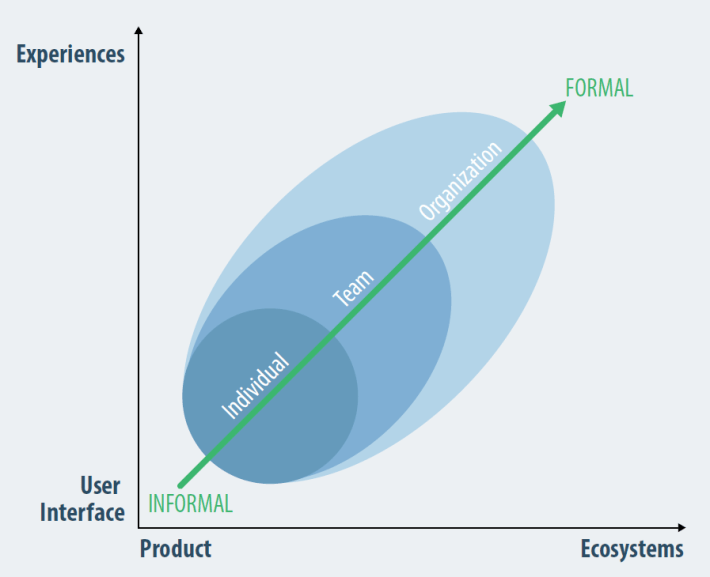Mapping Experiences is about possibilities. In it, I highlight many of the existing tools for mapping experiences from different perspectives. Mapping an experience is not a singular activity, and there are many ways to go about it.
But with possibility comes choice. Which diagram should be used in which situation? How do you select the appropriate model?
There are three key types of models needed to describe an experience:
- Models of individuals: Who are your designing for? Personas, proto-personas, and consumer insight maps stand as models of the individual.
- Models of current experiences: Maps of experiences come seek to describe the broader context, including goals. What are the circumstances of an experience? What are the jobs to be done? What are their needs, feelings, and motivations?
- Models of future experiences: You may also need to create models the future state so the organization can see where it’s heading. What do solutions look like? How can we represent them for testing and evaluation?
The diagram below shows the range of models outlined in the book:

Select what to map from a range of options
Generally, you’d select one from each group. More are possible, of course, but be careful of “model proliferation.” I’ve been guilty of this: over-modelling and subsequently over-documenting. Don’t fall into that trap. Avoid redundancy.
Clarity Over Detail
The goal of creating visualizations is to clarify human experiences for your team. If you end up with an array of different models that may only confuse.
In many situations you might need a map at all. Question what you need and why you think you need it. The amount of formality and rigor you put into your effort depends on your situation.
Typically, the less complex the solution and the smaller the team, the lower the need for mapping and visualizing the experience. On the other hand, mapping can help teams dealing with solutions that have interlocking experiences within large organizations.

Determine when and if you need to map experiences, as well as the level of formality
Find a Balance
Note that I am not advocating big, upfront research. Ideally, building empathy for the customer experience is a regular ongoing activity. But grounding yourself in reality first saves time and reduces risk later. It need not take long, and visualization tends to make the process go quicker.
There are different approaches to the process depending on your situation. Alternatives for a quick, informal set of diagrams might look like the following options:
- Proto-personas > Experience map > Storyboards
A lengthier, more formal process might include these diagrams:
- Personas > Mental Model Diagram > Scenarios & Storyboards > Value Proposition Canvas
- Consumer Insight Maps > Service Blueprint > Storylines > Business Model Canvas
Of course, you may have encountered or used additional models and diagrams. The above framework is not comprehensive.
Keep the intent of mapping in mind: to tell the overall story of individuals and their interactions with an organization, both past and future, to help the organization make sense of their playing field.

And all of these are artifacts that can be used to test your hypotheses with users and customers. Love the point that a persona is just another type of diagram!
As always Jim: Love your contributions and the clarity they bring!
Thank you, Jim, for a quick summary. Loved the book as well – quite comprehensive. It would, however, be great if you couple that with some quick exercises.
Thank you, Jim for the quick summary. Loved the book as well – quite comprehensive. It would, however, be great if you could couple that with some quick exercises (perhaps in any later editions). Thanks!
Pingback: Benefits of Mapping Experiences | EXPERIENCING INFORMATION
Pingback: Дайджест продуктового дизайна, июль 2017 | Юрий Ветров об интерфейсах
Pingback: Benefits of Mapping Experiences – Unofficial BBBY Design Blog
Pingback: Benefits of Mapping Experiences – BBBY Design Blog
Pingback: Дайджест продуктового дизайна, июль 2017 - Юрий Ветров об интерфейсах